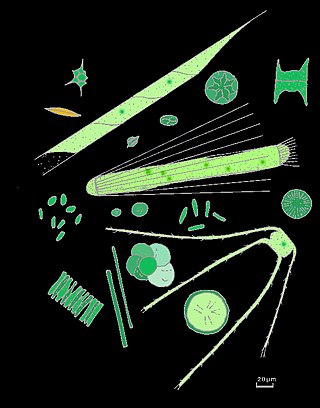Plankton
organisms that are in the water column and are incapable of swimming against current From Wikipedia, the free encyclopedia
Plankton are drifting organisms that live in the surface layers of the ocean. They live in the top layer of the ocean, called the epipelagic zone. They are not strong enough to swim against ocean currents. The term is in contrast to nekton, who can control their movements.[1] There are three groups:
- Phytoplankton: which live at the surface of the ocean and photosynthesise (use light to make sugars and other molecules).
- Eukaryote algae: diatoms, coccolithophores, some dinoflagellates.
- Bacteria: cyanobacteria.
- Zooplankton: small protozoans or metazoans: Ctenophores; jellyfish; rotifers; foraminifera; tiny crustacea and other animals. Some eggs and larvae of larger animals such as fish, crustaceans, and annelids. Apart from the eggs, they all feed on other plankton.
- Some groups fall into both categories. Dinoflagellates can be either photosynthetic producers or heterotroph consumers; many species are mixotrophic depending upon their circumstances. It is also hard to fit viruses into this scheme; yet they are present in great numbers.



Plankton are important in the ocean's food chain. They are the main source of food for almost all fish larvae as they switch from their yolk sacs to catching prey. Basking sharks and blue whales feed on them directly; other large fish feed on them indirectly, by eating fish of smaller size, such as herrings.
The distribution of plankton is governed more by nutrients than by temperature. Large tracts of ocean are blue and sterile. The reason is that these areas lack one or more crucial nutrients for the photosynthetic plankton, upon whom all the others depend. Broadly speaking, areas near land masses get nutrients by rivers and wind. The key nutrient lacking in the Pacific ocean is iron, essential in molecules such as ferredoxins, iron-sulfur proteins which do electron transfer in a range of metabolic reactions.
References
Wikiwand - on
Seamless Wikipedia browsing. On steroids.
